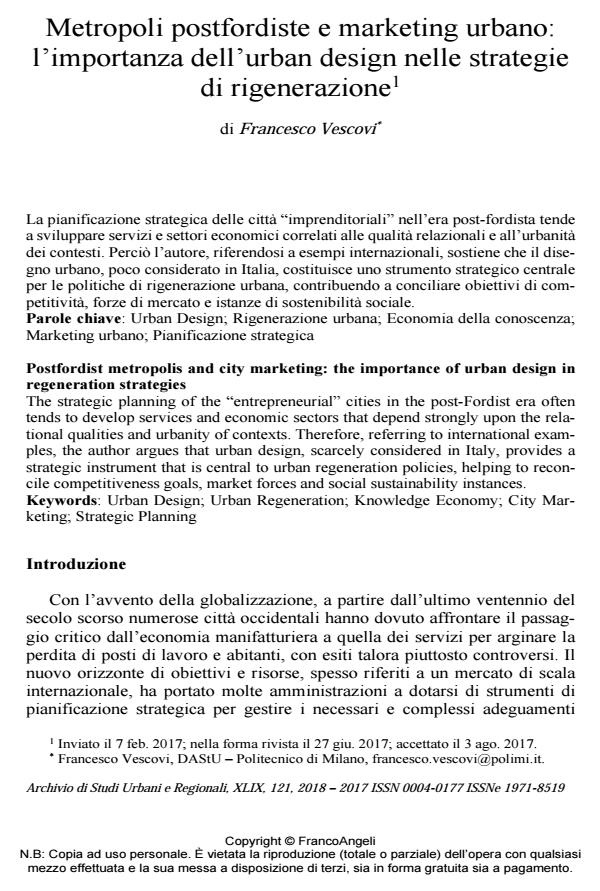Metropoli postfordiste e marketing urbano: l’importanza dell’urban design nelle strategie di rigenerazione
Titolo Rivista ARCHIVIO DI STUDI URBANI E REGIONALI
Autori/Curatori Francesco Vescovi
Anno di pubblicazione 2018 Fascicolo 2018/121
Lingua Italiano Numero pagine 19 P. 120-138 Dimensione file 240 KB
DOI 10.3280/ASUR2018-121007
Il DOI è il codice a barre della proprietà intellettuale: per saperne di più
clicca qui
Qui sotto puoi vedere in anteprima la prima pagina di questo articolo.
Se questo articolo ti interessa, lo puoi acquistare (e scaricare in formato pdf) seguendo le facili indicazioni per acquistare il download credit. Acquista Download Credits per scaricare questo Articolo in formato PDF

FrancoAngeli è membro della Publishers International Linking Association, Inc (PILA)associazione indipendente e non profit per facilitare (attraverso i servizi tecnologici implementati da CrossRef.org) l’accesso degli studiosi ai contenuti digitali nelle pubblicazioni professionali e scientifiche
La pianificazione strategica delle città "imprenditoriali" nell’era post-fordista tende a sviluppare servizi e settori economici correlati alle qualità relazionali e all’urbanità dei contesti. Perciò l’autore, riferendosi a esempi internazionali, sostiene che il disegno urbano, poco considerato in Italia, costituisce uno strumento strategico centrale per le politiche di rigenerazione urbana, contribuendo a conci-liare obiettivi di competitività, forze di mercato e istanze di sostenibilità sociale.
Parole chiave:Urban Design; Rigenerazione urbana; Economia della conoscenza; Marketing urbano; Pianificazione strategica
Francesco Vescovi, Metropoli postfordiste e marketing urbano: l’importanza dell’urban design nelle strategie di rigenerazione in "ARCHIVIO DI STUDI URBANI E REGIONALI" 121/2018, pp 120-138, DOI: 10.3280/ASUR2018-121007